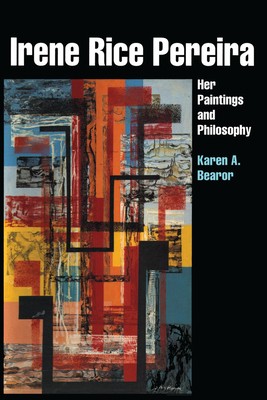
- We will send in 10–14 business days.
- Author: Karen A Bearor
- Publisher: University of Texas Press
- ISBN-10: 0292737238
- ISBN-13: 9780292737235
- Format: 15.2 x 22.9 x 2 cm, softcover
- Language: English
- SAVE -10% with code: EXTRA
Reviews
Description
Artist Irene Rice Pereira was a significant figure in the New York art world of the 1930s and 1940s, who shared an interest in Jungianism with the better-known Abstract Expressionists and with various women artists and writers seeking "archetypal" imagery. Yet her artistic philosophy and innovative imagery elude easy classification with her artistic contemporaries. In consequence, her work is rarely included in studies of the period and is almost unknown to the general public. This first intellectual history of the artist and her work seeks to change that.
Karen A. Bearor thoroughly re-creates the artistic and philosophical milieu that nourished Pereira's work. She examines the options available to Pereira as a woman artist in the first half of the twentieth century and explores how she used those options to contribute to the development of modernism in the United States. Bearor traces Pereira's interest in the ideas of major thinkers of the period--among them, Spengler, Jung, Einstein, Cassirer, and Dewey--and shows how Pereira incorporated their ideas into her art. And she demonstrates how Pereira's quest to understand something of the nature of ultimate reality led her from an early utopianism to a later interest in spiritualism and the occult.
This lively intellectual history amplifies our knowledge of a time of creative ferment in American art and society. It will appeal to a wide range of readers interested in the modernist period.
EXTRA 10 % discount with code: EXTRA
The promotion ends in 9d.08:16:34
The discount code is valid when purchasing from 10 €. Discounts do not stack.
- Author: Karen A Bearor
- Publisher: University of Texas Press
- ISBN-10: 0292737238
- ISBN-13: 9780292737235
- Format: 15.2 x 22.9 x 2 cm, softcover
- Language: English English
Artist Irene Rice Pereira was a significant figure in the New York art world of the 1930s and 1940s, who shared an interest in Jungianism with the better-known Abstract Expressionists and with various women artists and writers seeking "archetypal" imagery. Yet her artistic philosophy and innovative imagery elude easy classification with her artistic contemporaries. In consequence, her work is rarely included in studies of the period and is almost unknown to the general public. This first intellectual history of the artist and her work seeks to change that.
Karen A. Bearor thoroughly re-creates the artistic and philosophical milieu that nourished Pereira's work. She examines the options available to Pereira as a woman artist in the first half of the twentieth century and explores how she used those options to contribute to the development of modernism in the United States. Bearor traces Pereira's interest in the ideas of major thinkers of the period--among them, Spengler, Jung, Einstein, Cassirer, and Dewey--and shows how Pereira incorporated their ideas into her art. And she demonstrates how Pereira's quest to understand something of the nature of ultimate reality led her from an early utopianism to a later interest in spiritualism and the occult.
This lively intellectual history amplifies our knowledge of a time of creative ferment in American art and society. It will appeal to a wide range of readers interested in the modernist period.


Reviews